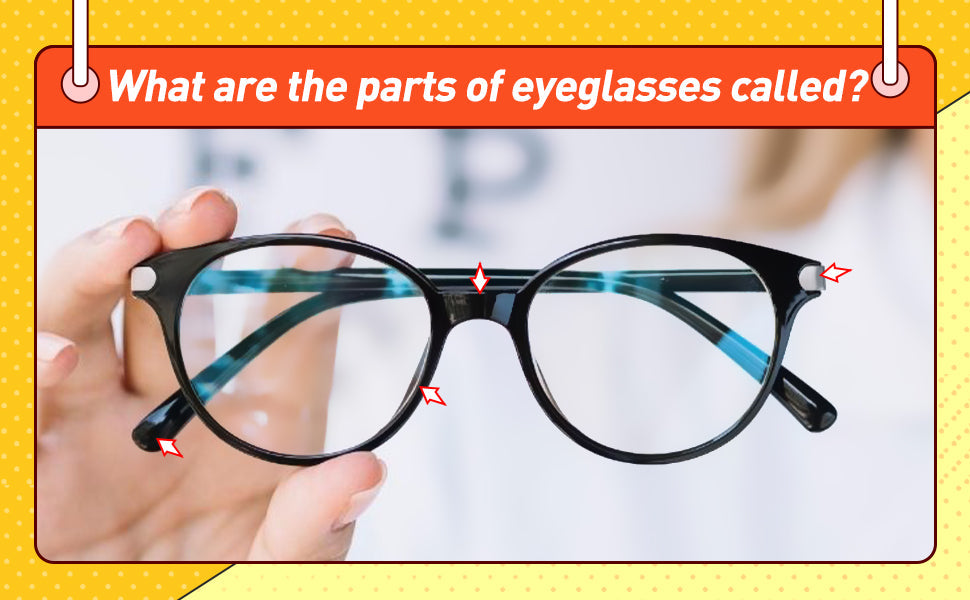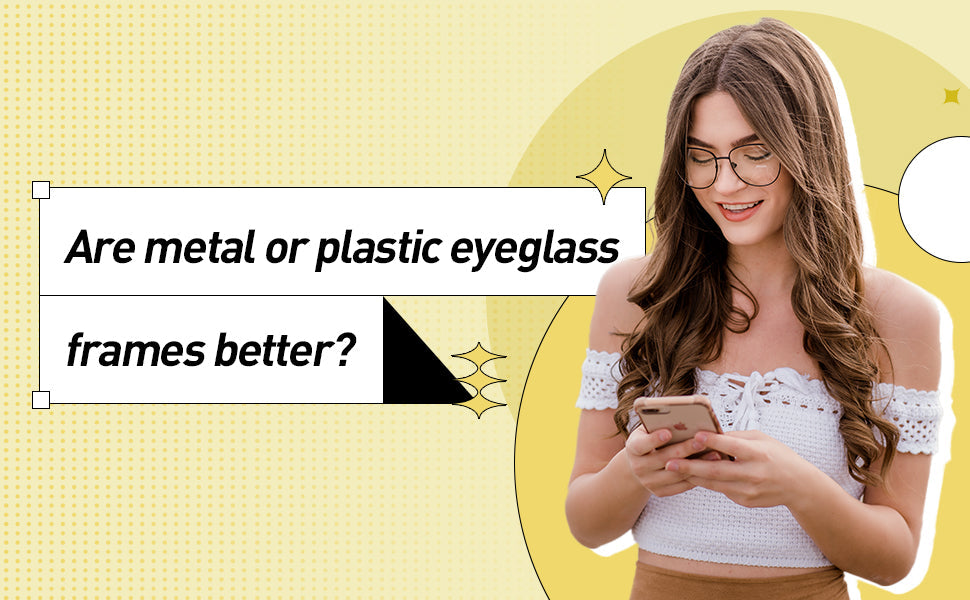
What are the parts of eyeglasses called

We all know that buying glasses can be an eye-opening experience. You have to try on so many pairs. You have to pick the right shape, the right style, and of course: the right lenses. But what about before you even get there?
How do you know which glasses are going to fit your face? What if they're too tight or too loose? Luckily, we've got a list of eyeglass parts that make up most eyeglasses—and what they're used for! So read on!
Different Parts of Eyeglasses

Knowing your eyeglass parts and how they work is essential for several reasons. First, understanding the basic anatomy of your glasses will help you take better care of them, which will extend their life.
Second, knowing about different eyeglass parts can help you make informed decisions when investing in new eyewear. Third, if something goes wrong with your frames or lenses (which can happen), it's good to know what might have caused the issue so that it doesn't happen again.
This will help you know exactly where to go when you need repairs or maintenance done on them!
Lenses
This is essential amongst many eyeglass parts. The lenses are what make your eyeglasses work. These eyeglass parts are made of plastic or glass. They correct your vision, reduce glare and filter out lights.
The material of these eyeglass parts can vary depending on how much money you want to spend. The more expensive the material, the lighter and thinner it will be; however, it may be more delicate than a cheaper alternative.
Lenses come in various colors, such as brown or grey, which can complement your eye color or give you an entirely new look!
Rims
The rim is an eyeglass part that sits on your face and keeps the lenses in place. It can be made of metal or plastic and comes in different shapes and sizes. Some rims are straight, others are curved, some are thicker than others, and some have fancy detailing like a touch of color or a subtle pattern.
The type you choose will depend on personal preference and what kind of look you're going for. A more classic frame might work best for someone who wants to keep things understated, whereas those favoring something trendier may want something more graphic and eye-catching!
Whether you go straight or curved depends mainly on what shape suits your face best. You may check this out to determine your face shape and the ideal rim type.
Nose Pads and Pad Arms
Nose pads are eyeglass parts that are nothing but small metal pieces that rest on your nose. Pad arms are the metal pieces that connect to the nose pads. They come in different sizes, and it is crucial to find one that fits you well.
You will want a smaller pad arm if you have a smaller nose. If your nose is big, choose a larger pad arm to stay securely attached to your glasses while on your face.
Temples
The eyeglass parts and temples are the arms that hold your glasses in place. They can be made from various materials, but plastic is the most common. Most temples are straight; curved and bent styles are also available.
Flexible temples are designed to fit comfortably around your ears to keep them securely in place. This helps when you’re wearing your glasses for long periods.
Rigid temples support those with larger heads or who want more frame stability. Short and long temple styles offer more versatility when finding a pair that suits your face shape and how you choose to style it.
Screws
Screws are what hold your glasses together. Without them, you wouldn't be able to wear your glasses at all. Note below things about these essential eyeglass parts.
Important: You need to ensure all screws are tight enough so that your eyeglass parts don't fall apart. If a screw is too loose, it will come undone and get lost. This may also loosen your other eyeglass parts.
How do I tell if they're loose? – Look at the screw head on each side of the frame near where it connects with another piece. They need to be tightened if you can spin them by hand without much effort (like when turning off a faucet).
Bridge
The bridge is among the eyeglass parts that rest on your nose. It's usually made from metal or plastic and should be entirely clear, without any decorative elements. The bridge should fit comfortably between your eyes and eyelids without being too tight or too loose.
If you have a wide nose bridge, you may need to order glasses with wider temples (the sides of the frames), so they will balance with your facial features.
However, if you have a narrow nose bridge, it's important not to go too far in the other direction, as this could cause discomfort and make it difficult for others to see what's going on up close.
In general, most people find that their eyes are wider than their glasses bridges, so choosing lenses slightly larger than expected can help ensure comfort during wear and help keep them from slipping down over time!
Conclusion
Eyeglasses are one of the biggest fashion accessories available, but they also impact your physical health and well-being.
With so many options available, deciding which type of glasses best suits your needs and lifestyle can be challenging. But if you know your eyeglass parts, half the struggle is dealt with.
We hope this article has helped you understand the different eyeglass parts and their significance. So if next time something wrong happens with your sunnies, you will know where things went wrong and how to fix them!






